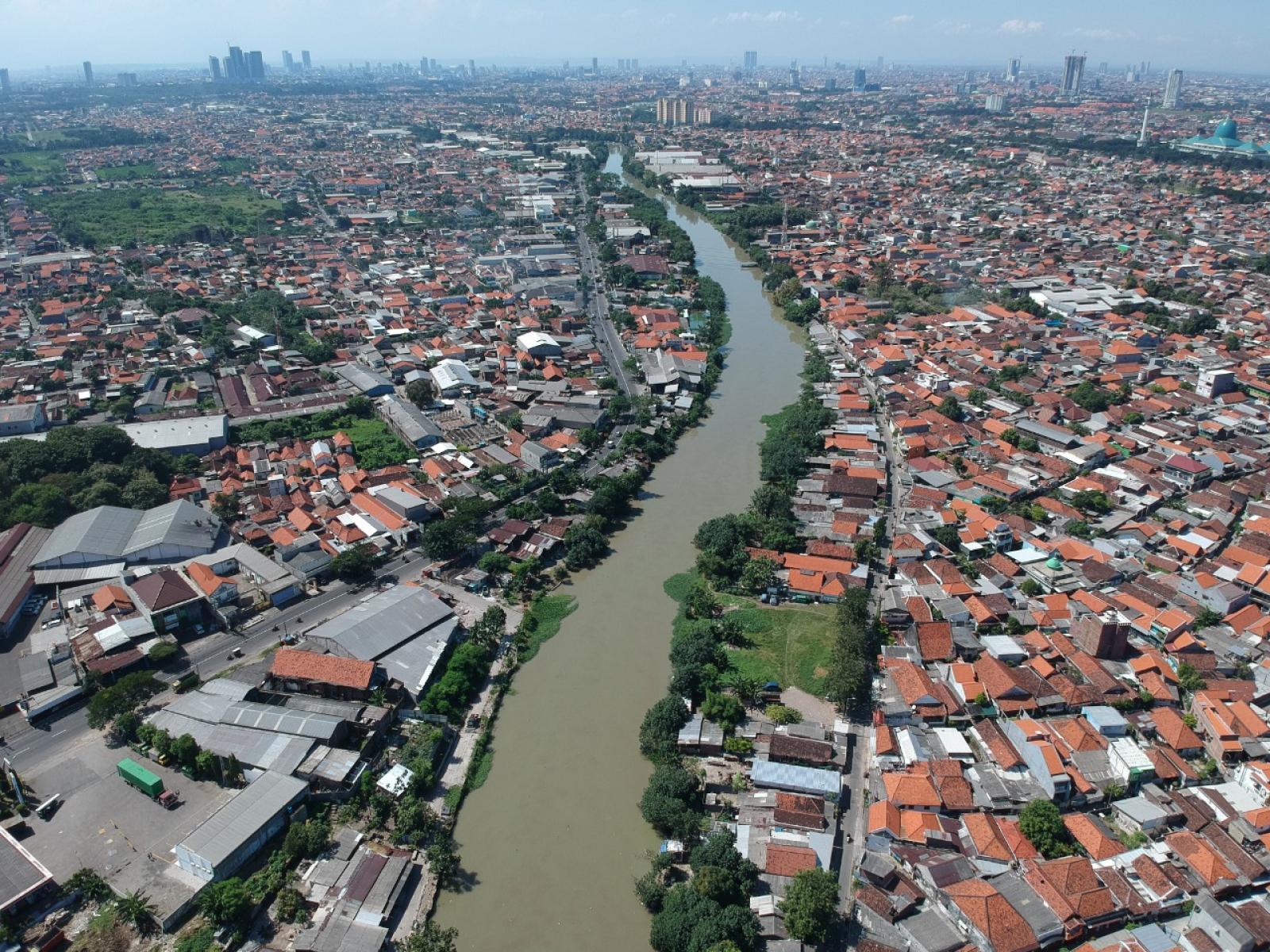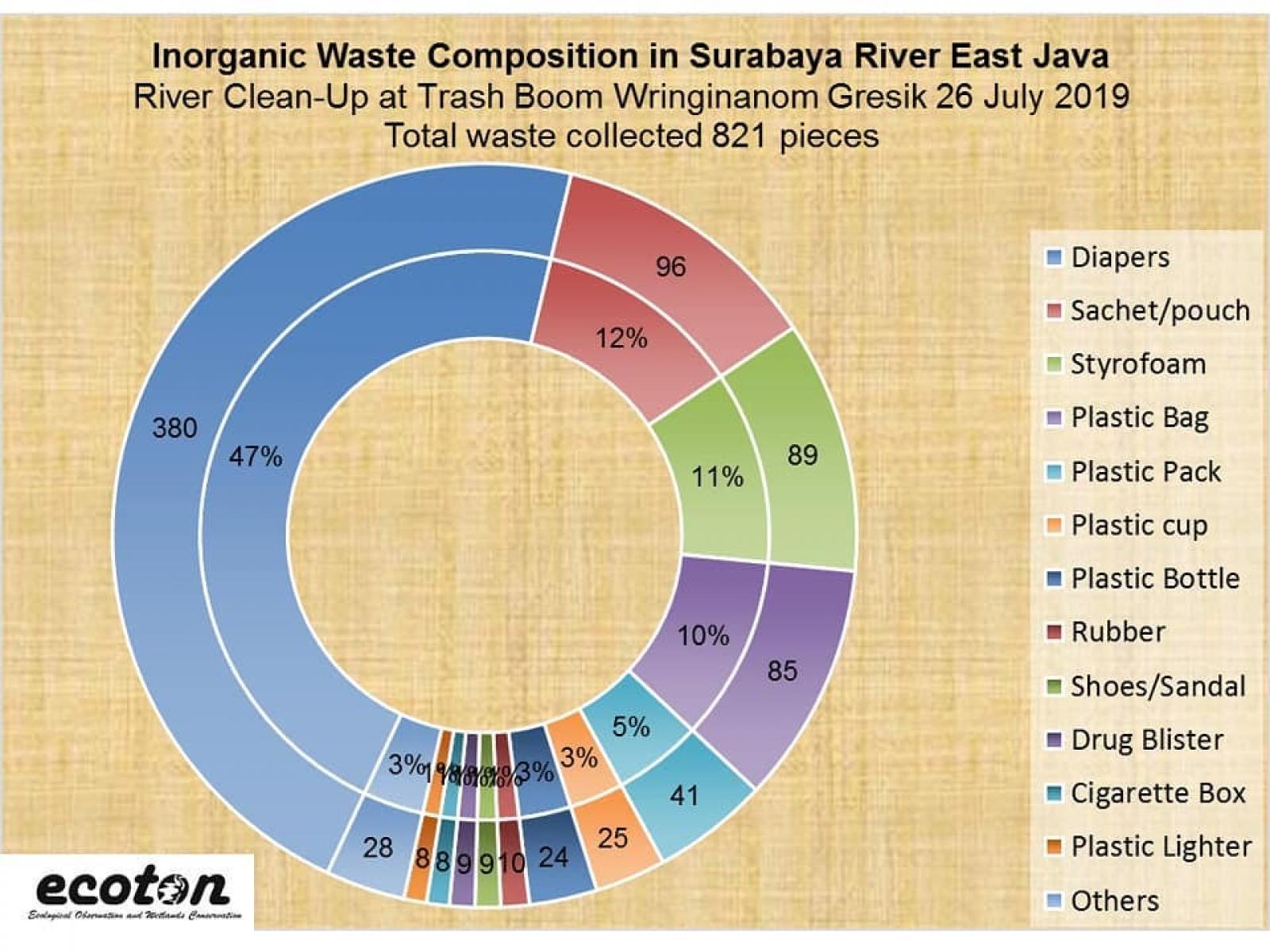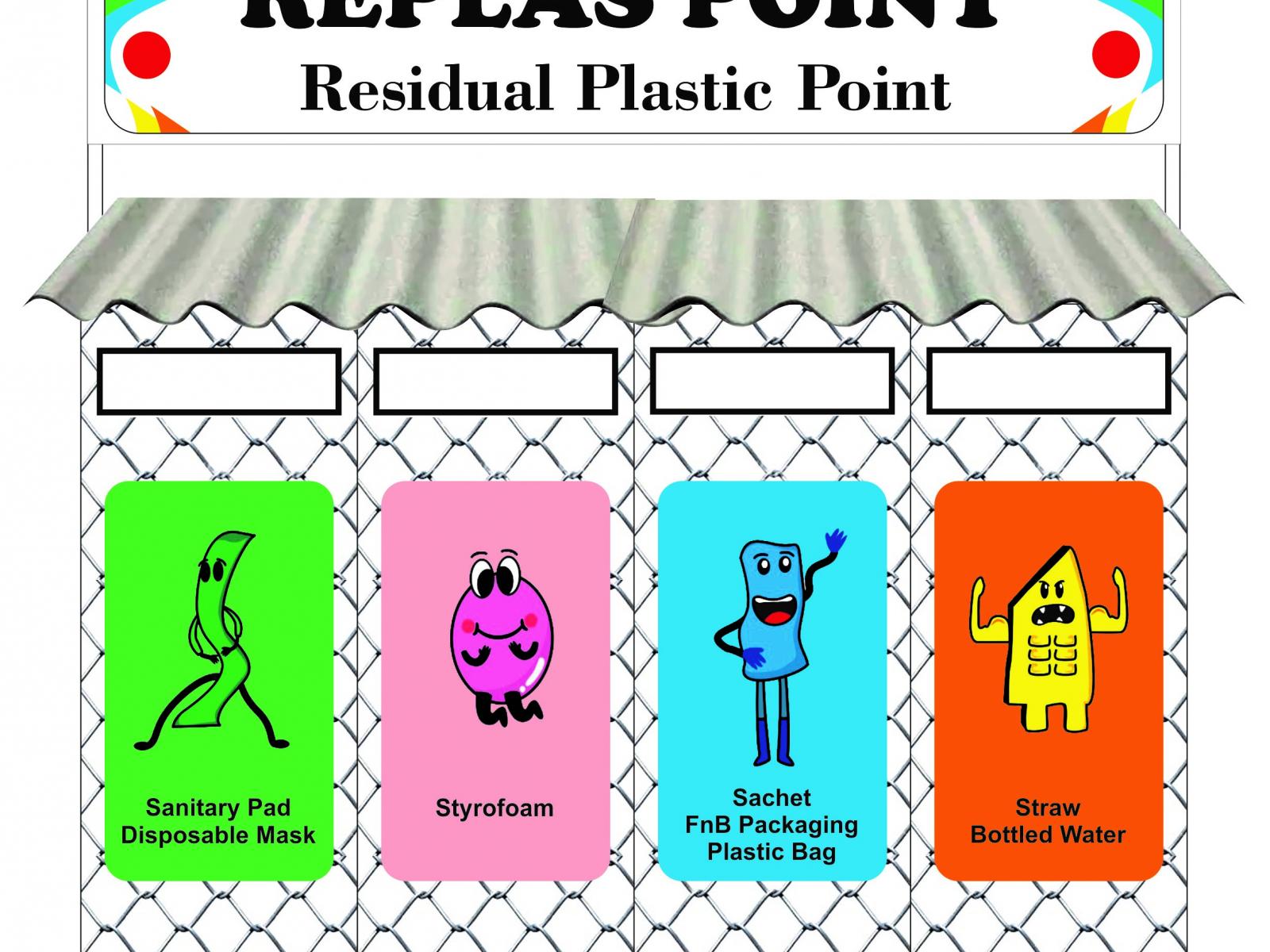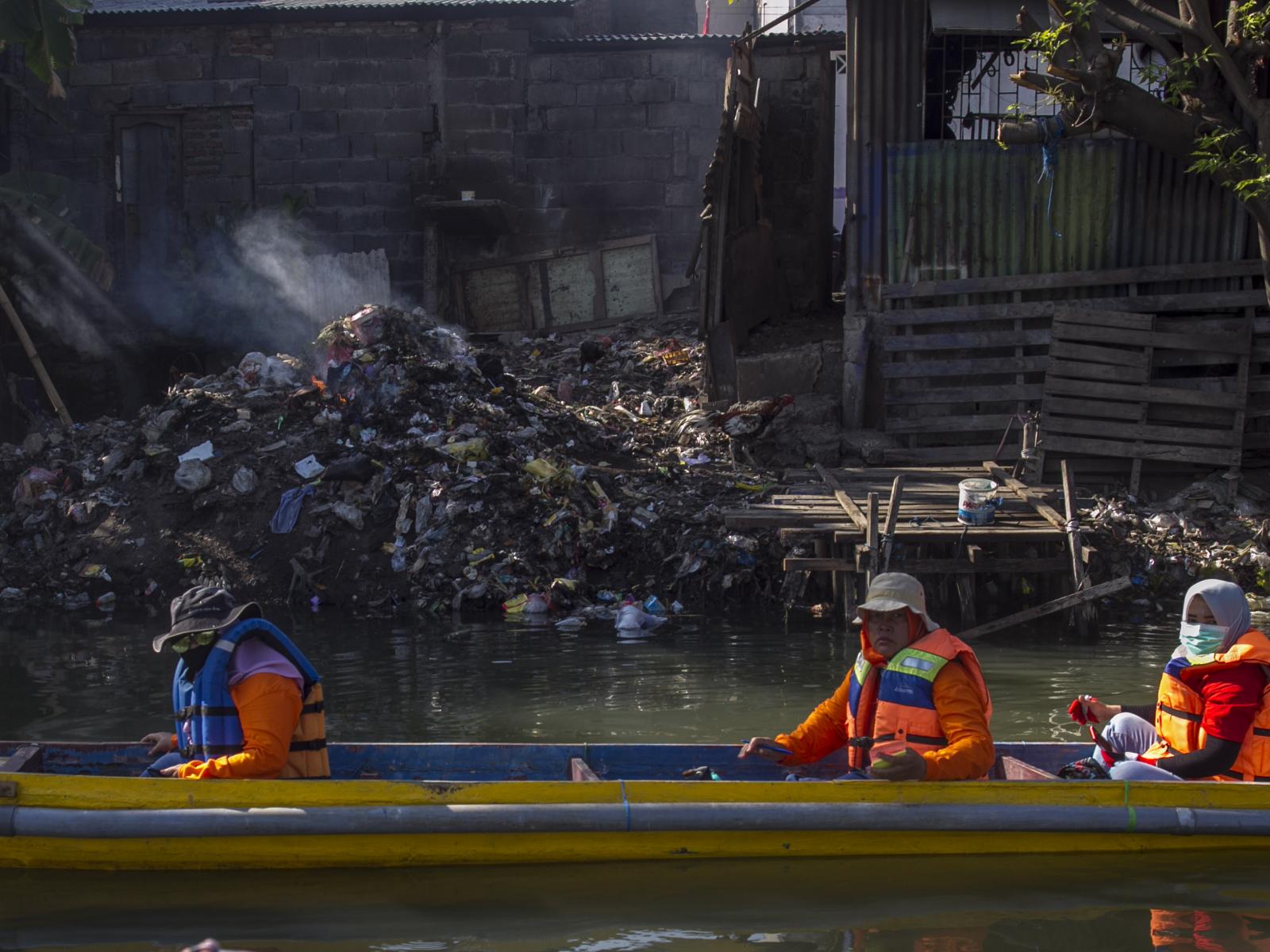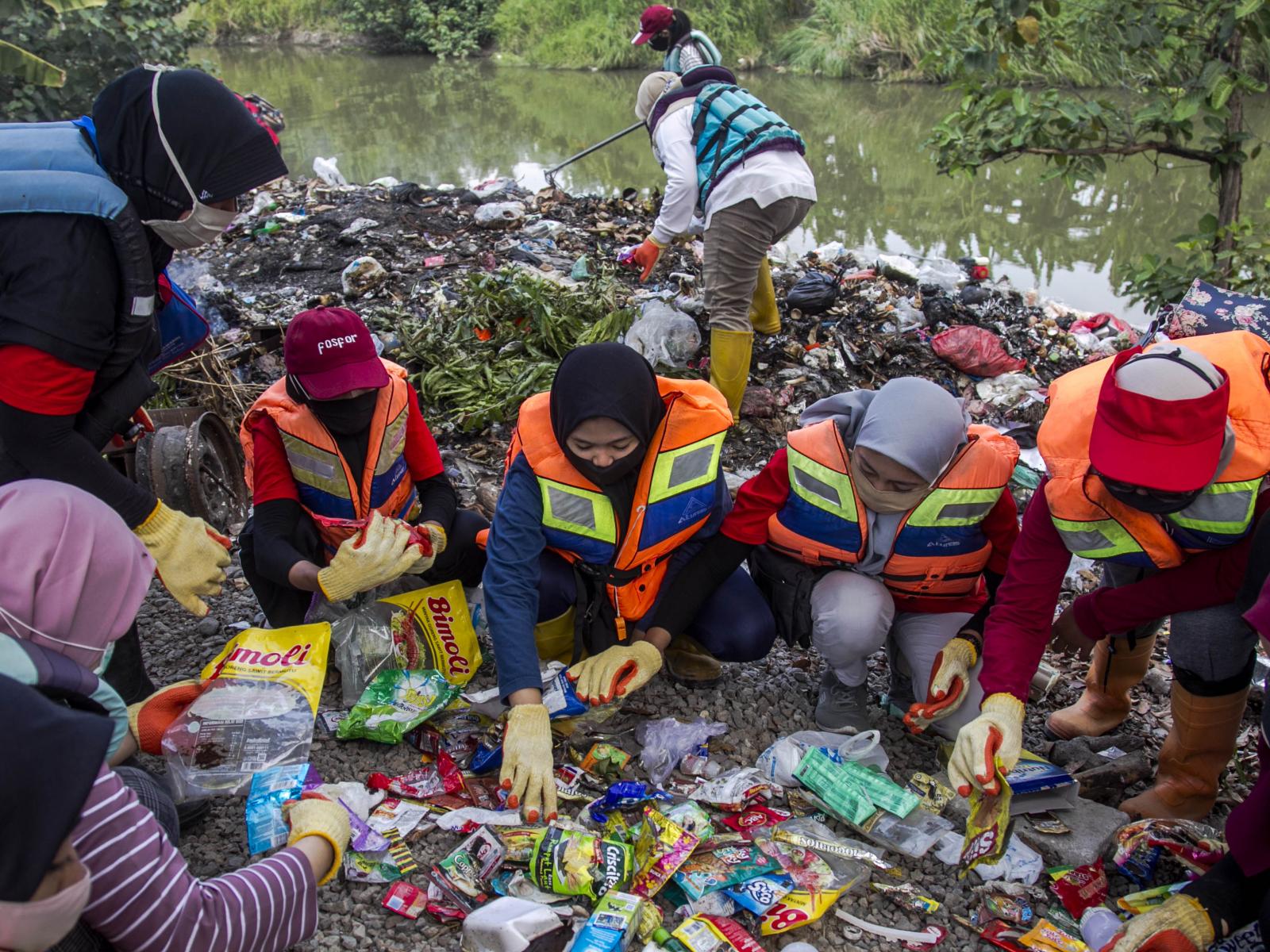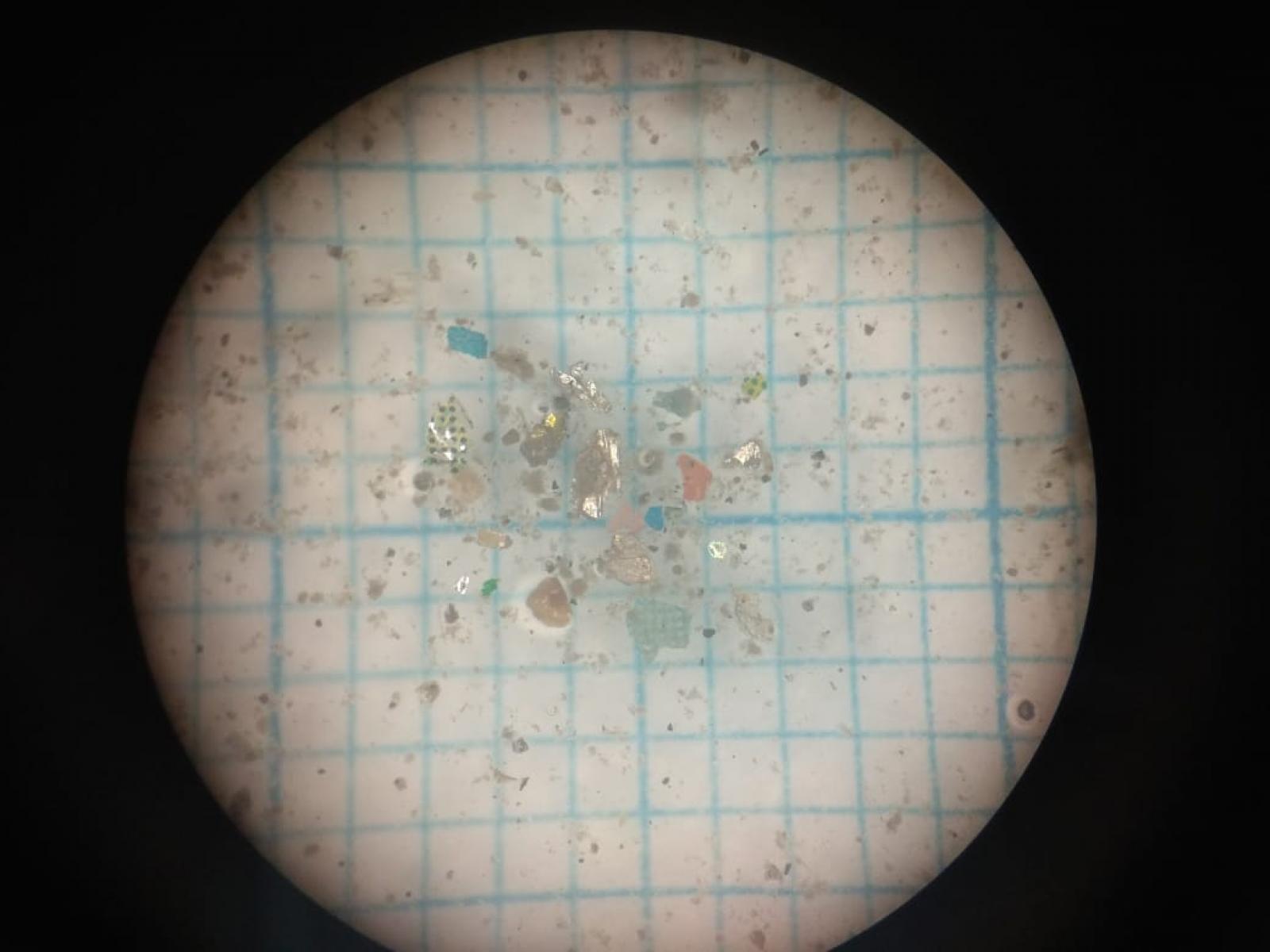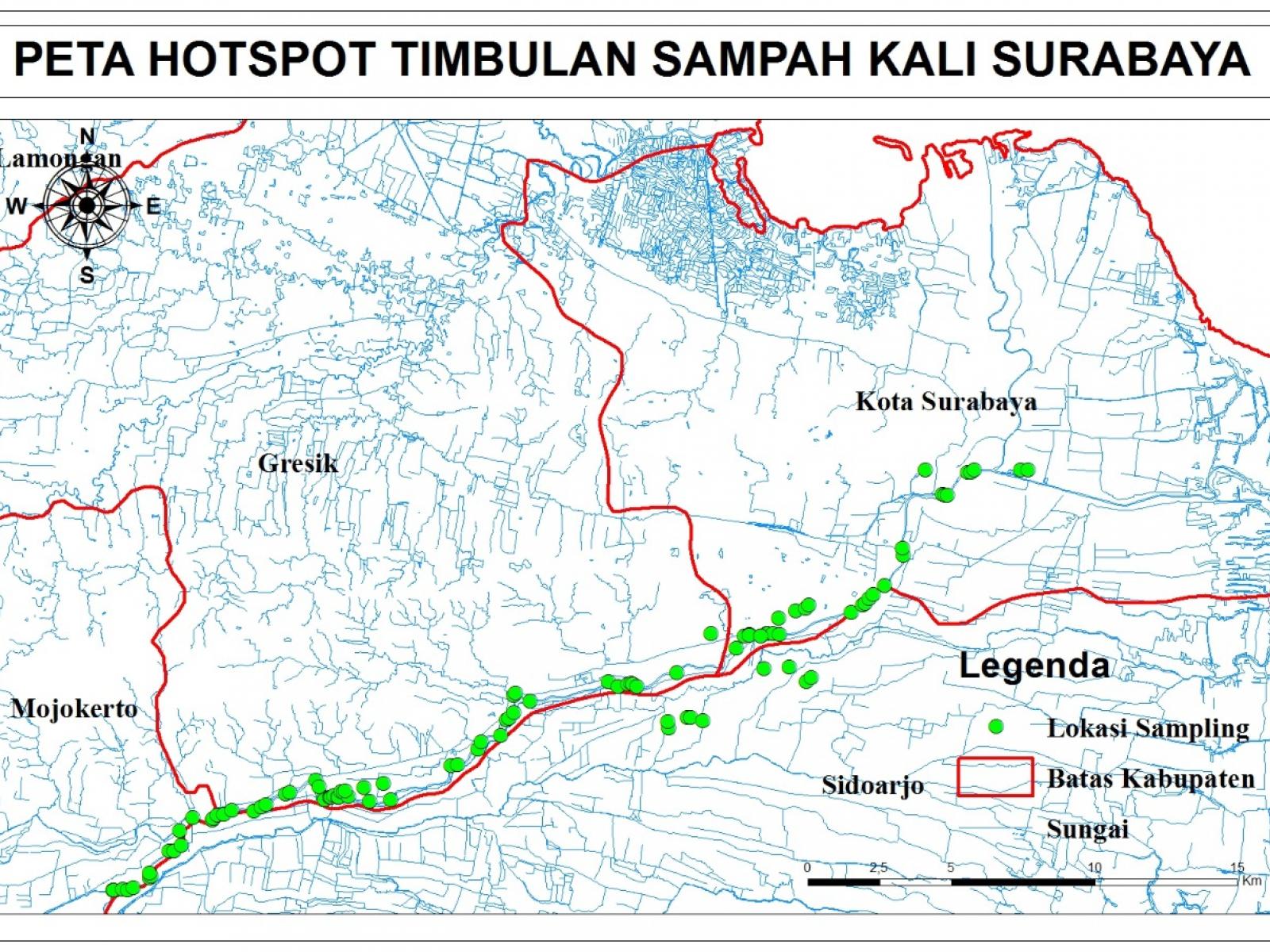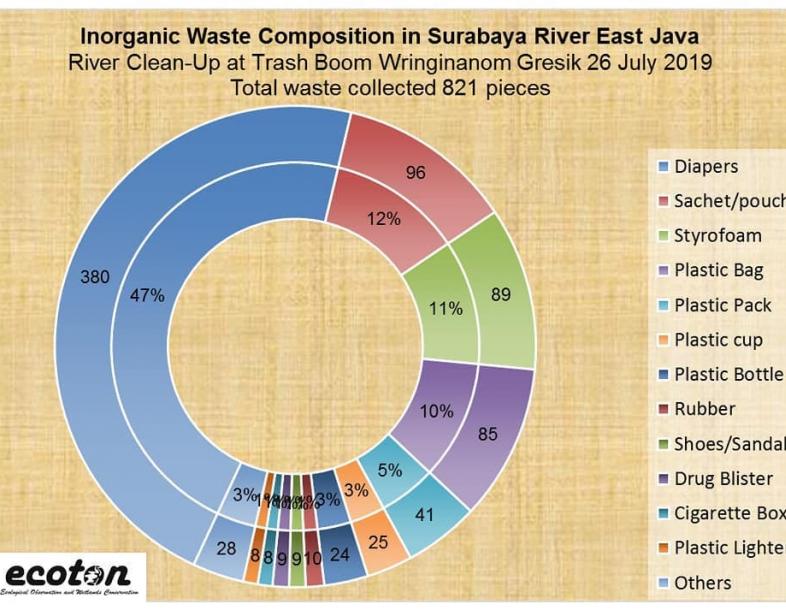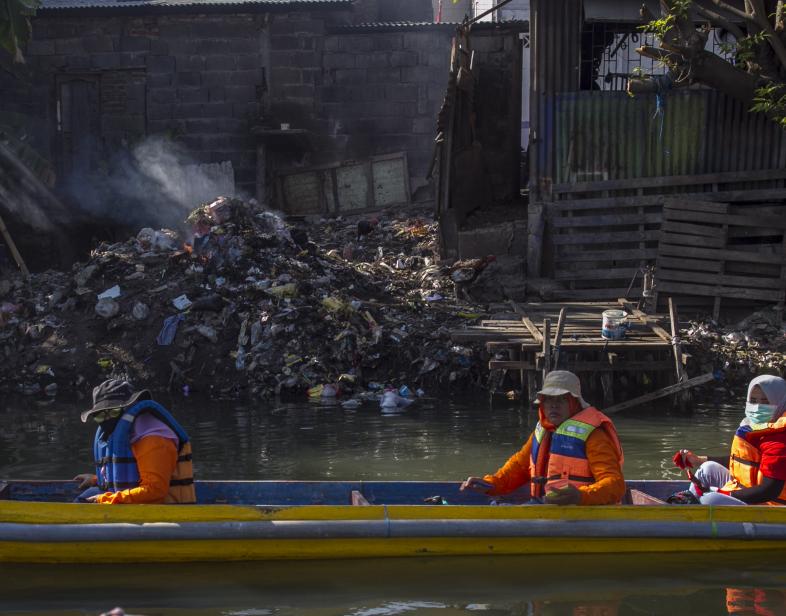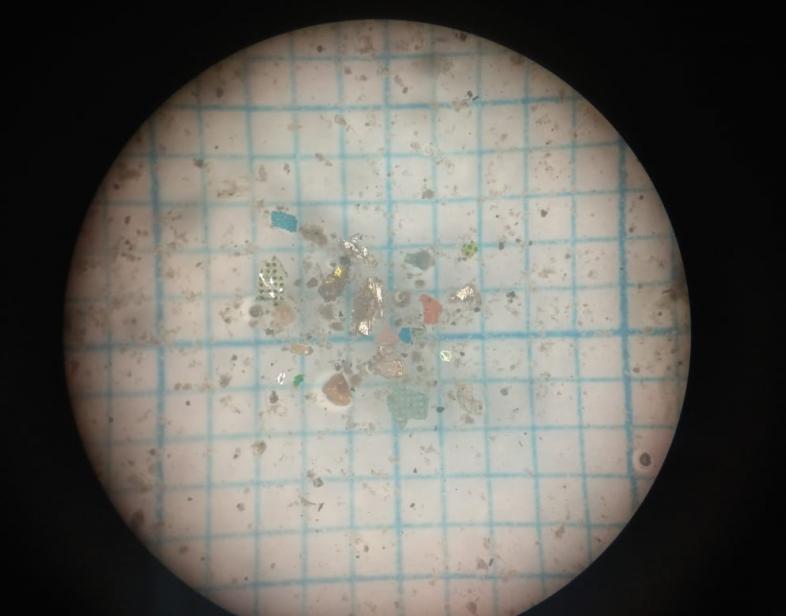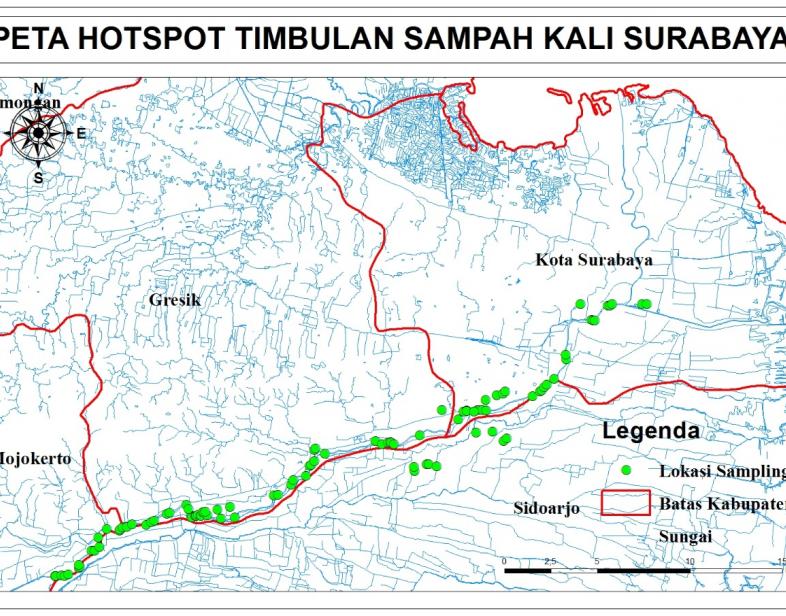An Overview Of Our Solution
Controlling waste in rivers is one of the steps for river restoration. Preliminary study (ECOTON, 2020) found 330 domestic residual plastic waste on river bank along Surabaya River even though the water supply more than 3 million consumers. Waste management from home is must and placement of residual trash facilities to cover 30% of Surabaya River bank area that has not been touched by waste services from Local Environmental Agency. In addition, collaboration between family members at home is also important in managing waste, that are mothers and children. Through waste management training in their schools, children will be given knowledge and hone their skills to recognize the impact of a bad waste management system. So that when at home, they will be able to apply it with their mother.
- Population Impacted: Populations along the Surabaya river
- Continent: Asia
Primeiro nome
Sobrenome
Tipo de organização
Análise de contexto
Surabaya River used to have river bank whose function was to accommodate river water bodies. However, field study conducted by the Surabaya River Women's Community (PPKS, 2020) found 1419 illegal buildings standing on the riverbanks. It is also potential for domestic waste disposal which results in formation pile of waste. 330 pile of waste were found along banks of Surabaya River (ECOTON, 2020) this is one of caused microplastic factors in river water. Recent research has identified the distribution of microplastics along Surabaya River in range of 1 - 300 particles / cubic meter (Octavia, 2019; Lestari, 2019 and ECOTON, 2020). Microplastics have bad impact on human health because they contain Endocrine Disrupting Chemical Compounds (EDC). These compounds can disrupt the human hormone system (Orozco, 2017).
Descreva a solução técnica que você queria que o público-alvo adotasse
The technical solution is formation of REPLAS Points (Residual Plastic Points) that are placed in 6 villages covering upstream to downstream of river with distance of approximately 13 km (jetis, sumengko, cangkir, jambangan, penambangan and prapatan maduretno village) as an effort to change behavior of waste disposal to riverbanks and reduce pile of waste. It is also supported by waste sorting education as an effort to reduce residual waste.
Another technical solution is Microplastic Academy training for 10 elementary - junior high schools through Surabaya River watershed to provide education about bad waste management that has resulted in microplastics and to support them to become technical monitors of waste management in their household.
Descreva sua intervenção comportamental.
1. 44% of waste trapped in Wringinanom Village, whose area Surabaya River passes (ECOTON, 2020) is residual plastic. This is because 30% of Surabaya riverbank area has not been facilitated by waste services. With the REPLAS Point trash facility, they will feel facilitated and change the behavior of waste management so that it is not thrown onto the banks again.
2. Through Microplastic Academy training, children will be given training in their schools including providing materials on knowledge of microplastics resulting from bad waste management (Knowledge), mini-research to hone their skills in analyzing the impact of bad waste management (Skills); and make commitment to monitor and assess them in-house management (Attitude). This indicator will be supported by results of the waste management assessment reporting and reduction of residual such as FMCG products (plastic bags, sachets, straws, bottled water, styrofoam, sanitary pads and disposable masks)
Alavancas Comportamentais Utilizadas
Conforme necessário, explique como você utilizou a(s) alavanca(s) com mais detalhes.
information about the benefits of REPLAS Points presented on social influence. motivating by approaching "door to door" to residents' homes. Provide education to use it as a place to manage their waste properly and at the same time commit to changing their previous behavior. In addition, this program involves children to motivate them to recognize and feel the impact of cause and effect to achieve a change in their environment. This is also supported in their commitment and campaigning through the media platforms they have.
Descreva sua implementação
- REPLAS Point is planned to be designed as a package of trash bins divided into 4 bulkheads for the type of waste that causes microplastic fragments (straws); filaments (plastic bags and sachets); foam (styrofoam) and fiber (sanitary pads and masks). It made into 12 packages which are distributed to 6 villages along the Surabaya river where there is pile of waste. We will also place an appeal board to prohibit trash from being dumped on the banks. Surabaya River women's community and local village government to report result monitoring project. Our organization has experience coordinating with Gresik Environment Agency and several village governments in Gresik, which was our previous working area. To train housewives in waste management, we will provide training on sorting waste from home because our organization is also developing Zero Waste Cities in 5 cities in Indonesia.
- To monitor waste management in household, we involve child to collaboration with their mother. they will be cadres in their schools through Microplastic Academy with following stages; KNOWLEDGE: education class about microplastics (origin, types and human health effect). mini research module to facilitate observation; SKILLS: take river water samples near their school using plankton net and identification using binocular microscope in their school; ATTITUDE: at the end, they will be given a monitoring assessment sheet for waste management at their home. besides that, they were also given a challenge utilize their social media to upload pile of waste around their environment with hashtag #SaveSurabayaRiverFromPlasticWaste.
Descreva a liderança para sua solução. Quem está liderando a implementação?
The project holder is ECOTON. In addition, we also involve Surabaya River women's community such as Wadulink and PPKS as well as the village government to control the progress of the project including process reporting and reporting if REPLAS Point is full to our organization. We will bridge the community with Local Environmental Agency to respond waste transportation. Meanwhile, in households, we recruited student cadres from 10 elementary until junior high schools to monitor waste management in their homes.
Compartilhe alguns dos principais parceiros ou partes interessadas envolvidos no desenvolvimento e implementação de sua solução.
This activity will involve several stakeholders such as:
1. Village Government and their apparatus whose territory is located REPLAS Point. we will come to their office for green profiling then to stay connected we will create a whatsapp group so that we can coordinate the running of the program and also hold meetings when we do program reviews.
2. Local communities (Wadulink and PPKS). We have group chat and have intense face-to-face meetings.
3. Environmental Agency of Sidoarjo, Gresik, Mojokerto and Surabaya Regencies. we will make visit to their office to present our findings and offer this solution so that we can be involved in waste transportation and coordination of relevant waste management. In addition, we will also create a WhatsApp group for coordination in each program area.
4. Company (if needed). We will try to meet with the company office to coordinate their waste withdrawal from the findings uploaded by pupils.
Quem adotou o(s) comportamento(s) desejado(s) e em que grau? Inclua uma explicação de como você mediu uma mudança de comportamen
Those who will implement this behavior are housewives because they have been managing waste in their households. Measured change indicators include: Compliance with housewives not to throw waste on the riverbanks; Reduction pile of waste (residual plastic waste hotspot update); mothers who provide lunch boxes and tumblr for their children is greater
The children will also supervise waste management based on sorting waste because they are exposed to bad effects of waste management at school. measured change indicators include: Report on the compliance of their mother's waste sorting by children through monitoring sheet; Number of children who do not use single-use plastics; Children's consumption behavior in buying food and drinks
Como você impactou a poluição da água? Por favor, seja específico e inclua a metodologia de medição quando relevante.
Handling waste will reduce pile of waste along riverbank. It will be monitored by the women's community and village government involved with reporting every 1 week and reviewed every 2 weeks. We will place REPLAS Point packages with capacity of 400 kg per trash for 1 hamlet each village. Transportation will be coordinated with the Environmental Agency in each area where REPLAS Points are placed every 4 days. As a support, waste sorting training was held. After the training will be reviewed every 2 weeks. The indicators include documented training and changes in waste management by sorting waste into 4 types of residual plastic waste. Waste management monitoring and commitment to sorting waste will also be monitored through monitoring sheets. The points assessed include; commitment, waste sorting, reducing residual waste. It will be reviewed by supervisors such as the Women's Community per week.
Como sua solução impactou os desafios de equidade (incluindo raça, gênero, etnia, classe social/renda ou outros)?
We involve women who are still stigmatized if women cannot become agents of change because in fact all genders are equal to get Environmental Right to good and comfortable environment. Women are also mostly perpetrators of environmental pollution because they also manage their waste, but they are also victims of these activities which result in their health potential. As much as 54.64% of waste management was burned (BPS, 2017) even though burning waste, especially plastic waste, one of which will have the risk of causing diseases such as breathless to cancer. So, we bring this program to educate housewives, to reduce the impacts that occur.
Quais foram alguns co-benefícios sociais e/ou comunitários?
Collaboration with women's community will monitor waste management and supervision if the REPLAS Point is fully filled to be able to report to us, which we will later coordinate with Local Environmental Agency regarding transportation and checking monitoring sheet assessed by children in each house every 1 once a week. Actually they will also receive education on good waste management.
Quais foram alguns co-benefícios ambientais?
Placement of REPLAS Points is expected to reduce pile of waste on riverbanks of Surabaya River and change behavior of managing waste that was previously mixed, in the end it can be sorted from their house so that residual plastics are reduced.
Reduction pile of waste will become one of activities to develop wetland protection and restore the function of Surabaya River Watershed.
Quais foram alguns co-benefícios do desenvolvimento sustentável?
The continuity of this program has been predicted. In the initial project, funds will be fully used, including training in sorting-based waste management and REPLAS Point facilities. Future maintenance of the facility will be taken from the village government subsidies and for additional REPLAS Point facilities it is also possible to collaborate with company.
Sustentabilidade: Descreva a sustentabilidade econômica de sua solução.
The continuity of this program has been predicted. In the initial project, funds will be fully used, including training in sorting-based waste management and REPLAS Point facilities, but for processes such as transportation will be taken from government subsidies in collaboration with Local Environmental Agency. Future maintenance of the facility will be taken from the village government subsidies and for additional REPLAS Point facilities it is also possible to collaborate with company.
Retorno do investimento: quanto custou para implementar essas atividades? Como seus resultados acima se comparam a esse investim
Funding for activities in USD: $ 5,500 facility (12 REPLAS Point packages and 12 appeal boards); Waste sorting training costs $ 1,000 (training package: pamphlets, learning media for participants in 6 villages); Microplastic Academy costs $ 1,000 (training package: learning modules, monitoring sheets for waste management, and learning media for 12 schools); Transportation: $ 2,000 and Facility maintenance: $ 1,000
The costs are comparable as they provide a strong return on investment by offering all the environmental, social and protection benefits of the Surabaya River Watershed described above at a price that may be equivalent to or even less than the alternative option.
Como poderíamos replicar com sucesso essa solução em outro lugar?
This program can be replicated elsewhere, considering that the problem of plastic waste has not yet been resolved, especially in Indonesia. Waste facilities such as REPLAS Point are needed by people in riverbank areas, considering that their areas have not been served by waste facilitation. So far they have been forced to throw their waste on the river banks and burn it because they have no other choice. In addition, waste management also needs to be supported by education to residents such as training, commitment, and development of strict waste regulations to regulate residents not to litter anymore.
This program adopts Zero Waste Cities that we previously developed in the village where our organization was founded and is still running until now.
